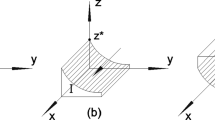Abstract
The system dynamic model (SD model) can simulate the dynamic change of the system from the overall perspective and carry out dynamic analysis of the structure, behavior and causality of the system by computer simulation under different assumptions. Therefore, to solve the problem of tripartite game between the government, private sector and owners which caused by the application of PPP model in the old community renovation, this paper establishes a three-party game model based on the evolutionary game theory and simulates the evolvement path of each participant by establishing SD Model with relevant computer Software. The research finds that: (1) the government, the community owners and the private sectors will eventually reach a stable and balanced state (supervision, participation, effort); (2) the government is dominant in the renovation, and the strategic choice of the private sectors and the community owners depends on the government’s strategy, the variables determined by the government and the relationship between these exogenous variables; (3) although a single variable could influence the strategic choice of each party, the formation of the final stable state depends on the interaction of multiple variables, and the government should handle the relationship between each stakeholders.












Similar content being viewed by others
References
Cai S, Zhou X, Ma T (2014) Patterns and countermeasures of renovation of old residential area in cities. J Shenyang Univ (Soc Sci) 16(06):723–726
Yang W, Wang X, Zhang F (2014) A research on PPP mode selection paths for public projects-based on the three-dimension framework of transaction and cooperation. East China Econ Manag 28(02):121–126
Xu J (2017) Out of PPP’s dilemma: a response of economic law to the PPP system supply from the external, perspective. J Jiangxi Univ Finance Econ 03:106–118
Fu J, Wang L (2016) The dilemma and crack path for implementing public private partnerships in the field of urban public utilities from the perspective of contact. J Beijing Inst Technol (Soc Sci Ed) 18(04):64–70
Chen S, Meng J, Yao H (2018) Profit distribution of water diversion PPP project based on the Shapley value, South-to-North water transfers and water. Sci Techn 16(02):202–208
Sastoque LM, Arboleda CA, Ponz JL (2016) A proposal for risk allocation in social infrastructure projects applying PPP in Colombia. Procedia Eng 145:1354–1361
Hu Z, Liu J, Zhou K (2016) Public–private cooperation mechanism for PPP project based on evolutionary game theory. Commer Res 07:9–17
Fan B, Jin J (2016) The impact of public service delivery on perceived public service performance: the mediating role of government image and the moderating role of public participation. Manag World 10:50–61
Zeng L, Li J, Li M (2015) A study on the validity of citizens’ subjective evaluation of public service: empirical analysis based on ground-level police service in Z city. Manag Rev 27(3):83–95
Requejo RJ, Camacho J (2011) Evolution of cooperation mediated by limiting resources: connecting resource based models and evolutionary game theory. J Theor Biol 272(1):35–41
Hyndman N, Lapsley I (2016) New public management: the story continues. Financ Account Manag 32(4):385–408
Han M, Cai X, Zhang Y, Chen C (2016) Research on governmental action in the PPP projects in risk aversion: based on principal-agent model. Constr Econ 37(09):16–20
Trevor LB, Matthew P (2003) transaction costs and institutional explanations for government service production decisions. J Public Adm Res Theor 13(4):441–468
Shen L, Wang Y (2017) Collaboration of public service contracting: an evolutionary game analysis. Manag Rev 29(03):219–230
Acknowledgements
The authors gratefully acknowledge the funding support from Humanities and Social Sciences Research Planning Fund of the Ministry of Education (Grant No. 16XJA790002) and Shaanxi Soft Science Research Program (Grant No. 2018KRM050).
Author information
Authors and Affiliations
Corresponding author
Rights and permissions
About this article
Cite this article
Guo, B., Li, J. Research on the evolution of participants collaboration mechanism in PPP model based on computer simulation: based on the old community renovation project. J Supercomput 76, 2417–2434 (2020). https://doi.org/10.1007/s11227-018-2631-z
Published:
Issue Date:
DOI: https://doi.org/10.1007/s11227-018-2631-z




